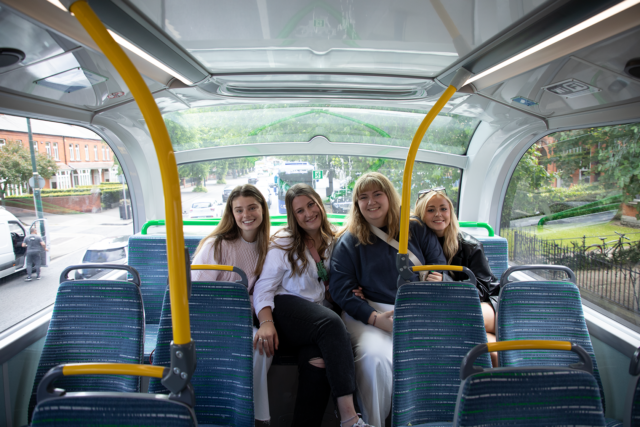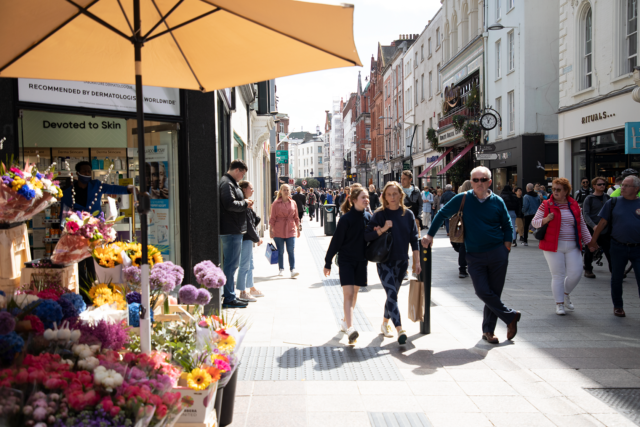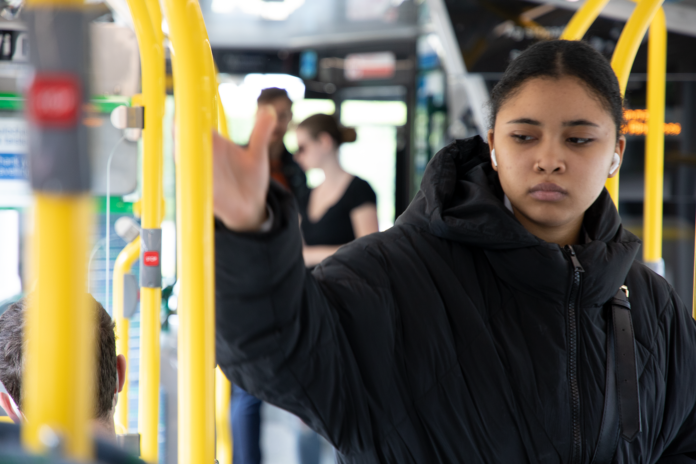By Katy Mae Turner | Photographer
It’s easy to fall into a bubble where one person’s life experience is the only life experience. Countries other than the United States have different environments and lifestyles, and learning about them is essential in order to move forward and progress in the world.
Ireland is the 23rd largest country in Europe at 32,595 square miles — over eight times smaller than the state of Texas. While Ireland may be small compared to the United States, the country has many ways to get around.
“Public transportation is definitely a popular option in Ireland,” Ashleigh Smith, a student at University College Dublin, said. “Having the bus straight from campus into the city is so nice.”

Transportation For Ireland (TFI) is the public transportation system Ireland operates on. TFI operates through services such as the bus, train and Dublin Area Rapid Transport (DART), among others. With a LEAP card, citizens and visitors have access to all of TFI’s services and can use them throughout the country.
Ireland is also working to reduce its environmental impact, and one way it’s doing so is replacing its buses with electric vehicles. The National Transportation Authority (NTA) and Alexander Dennis Limited agreed in 2021 to add 200 electric buses that will produce zero emissions into operation.
“The contract signed for the supply of these battery-electric buses highlights the NTA’s commitment to a sustainable and accessible transport network,” Anne Graham, the CEO of the NTA, said. “Over the next five years, we are planning a major increase in the number of low- and zero-emission urban buses in operation on the Transport For Ireland network across the country.”
University College Dublin sits at the end of the 39A bus route and serves as home for many international students during the summer, whether they’re taking classes, working internships or doing research.
Divya Lal, a student at the University of North Texas, is spending her summer working as an intern in Dublin.
“In terms of navigation and public transportation, it’s fantastic compared to the U.S.,” Lal said. “Having buses that take you right where you need to be isn’t something that’s as accessible in Dallas.”

One American city known for its public transportation system is New York City, which uses the Metropolitan Transportation Association to operate the bus and subway systems. Both systems offer 24-hour services, after having been closed at night for cleaning for over a year at the beginning of the pandemic.
Samuel Vincent Aubuchon, a resident of New York City for almost two years, said he considers himself familiar with navigating life in one of the largest American cities.
“New York City is deceivingly massive,” Aubuchon said. “I truly believe that efficient public transportation is a must for any urban society. It’s better for the environment and for people’s health. Leave the roads for infrastructure and emergency personnel.”
New York City is four times larger than Cork, the largest city in Ireland. It is also the only city in the United States that ranks among top 10 busiest transit systems. The United States is much larger than any European city, which can make getting around and navigating larger cities more difficult.
While these options are great for some, not everyone is able to get through a large city as easily. People with mobility issues from an accident, disability or older age will find cities less user-friendly. Since 2017, Dublin has been working to implement the National Disability Strategy. The strategy has eight main themes, two of which are living in the community and transport and access to places.
“‘Walkable city’ really means ‘very inaccessible’ for disabled New Yorkers,” Aubuchon said. “It’s a growing issue in the city, and not enough is being done about it.”

Both Dublin and New York City rank highly worldwide when it comes to accessibility for visitors with disabilities. Dublin ranks No. 1, and New York City is tied with Amsterdam for second place.
Large cities are far from perfect, and no two cities are built the same. Whether you cross state borders or fly across the ocean, every city has something different to offer. It is important to take the time to do research before visiting and to embrace a new lifestyle.






